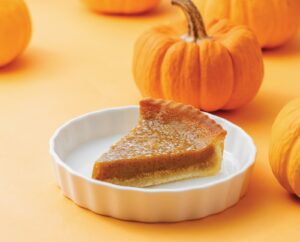Yule, also known as Yuletide, Yulefest, and Winter Solstice, has many traditions that are present in current day religions. If you like history as much as I do, come on an exploration journey with me.
First, what is Yule or the Winter Solstice? Solstice is derived from the Latin words sol (sun) and sistere (to stand still). During this time of declination, the sun appears to be standing still. This year, that the solstice occurs on December 21. After this day, the days get longer until we reach the Summer Solstice.
In ancient times, Yule was celebrated by the Germanic tribes of Northern Europe in anticipation of the return of the light and spring. This was important to them because they lived according to the seasons. Hunting and cultivating food depended on the sun. Many traditions that came out of this celebration are co-mingled in our present- day festivities.
1. The Evergreen Tree, because its color never changed and it did not die in the winter, symbolized life, power over death, renewal, and protection from destruction during the winter. These were cut and brought inside the home, and became the forerunners of our Christmas Tree tradition.
2. Mistletoe leaves represented the feminine energy of Mother Goddess and fertility, while the berries represent the seeds of the Forest God. Mistletoe was hung over doorways to protect against severe weather, thunder, and lightning. It was also worn or hung above a headboard for fertility. Kissing while standing under the mistletoe comes from a Norse tradition.
3. The Yule Log was burned to keep evil spirits from entering the home. A large oak tree was cut and placed bottom first into the hearth so that the flame would burn for a long time. The longer it burned, the sooner the sun would arrive and bring warmth.
4. Candles were another way to keep a fire burning in the home to ward off evil and attract the sun. Today candles are used in sunrise services, Catholic church, and Buddhist butter lamps.
5. Holly leaves represented masculine energy while the red berries represented feminine energy. Holly was used to decorate doors, fireplaces, and windows, and the spiky leaves were thought to keep evil spirits away from the home. “Deck the halls with boughs of holly, fa la la la la …” Holly was also soaked in water, and the Holly Water was used to sprinkle on newborn babies. Sounds like christenings and baptisms, doesn’t it?
6. Wreaths, traditionally made from evergreen branches, signified the wheel of life, birth, death, and rebirth. They were adorned with berries and cones, hung in homes, and given as gifts of goodwill. Today’s wreathes are made for all kinds of occasions.
7. Gift Giving started with the Roman winter festival called the Feast of Saturnalia. The festival lasted for seven days, and gifts were given on December 23, the last day.
8. Caroling during olden times was done by children. They would go door to door in the villages singing songs honoring the winter solstice. As memorialized in The Christmas Song, “Yuletide carols being sung by a choir, and folks dressed up like Eskimos.” In return, villagers would give the children treats and small gifts to symbolize the abundance given by Mother Earth to her earth children.
9. Bells were used to drive away the evil that was said to come in the winter. Jingle Bells!
Santa Claus is steeped in Norse and Viking tradition. Vikings considered Odin the Father of the Gods, and his month was called Jultid (Yuletide). He was said to have an eight-legged horse that he rode down from the heavens to earth. In traditional folklore, Santa Claus had only 8 reindeer — Rudolf was not included until much later. Odin would visit gatherings of people, listen to and watch the happenings, and decide who was “naughty or nice.” He would occasionally leave a gift behind.
Another Norse god, Thor, was the god of thunder. He had a long white beard and wore the color red, representing his astrological element of fire. He rode a chariot pulled by two white goats and lived at the north pole.
Other Norse gods including Jultomten may have influenced the evolution of what we know today as Santa Claus, who evolved from folklore and traditions of Germanic tribes back in the 11th century.
Elves, gingerbread, apple cider, and the colors red, green, white, silver and gold derived from ancient traditions and are incorporated into some of our religions and spiritual practices today. Knowing the origin and intent behind our traditions can add deeper meaning to our present-day celebrations.
Until we read again, Peace & Love!
























